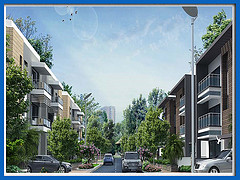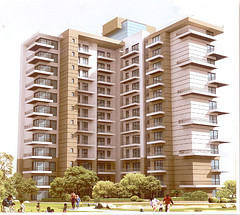There are various factors that must be discussed before purchasing property. One needs to consider factors such as economic growth outlook, interest rates, job security, demand, credit supply etc, understand the overall dynamics of the real estate sector.
Rough estimates show that out of the total 100 percent real estate market the residential segment weightage is approximately 75 percent whereas 20 percent is commercial office spaces and balance 5% comprises retail, hospitality.
The mid market residential segment (residential properties between Rs 15 – 50 lakh) represents nearly 85% of total mortgage disbursements in India. Therefore, the mid market residential segment represents nearly 64% of the market. Almost 55% of mortgage finance disbursement for residential properties happens within the top seven cities and the balance 45% is shared by the whole country.
There was a dearth of two to three bedroom properties within this range of Rs 15 – 50 lakh within the greater metropolitan areas of major cities. Easy supply of money from equity capital sources created an artificial demand of land for the development of large township projects and SEZs. Everybody started announcing huge and multiple projects but ignored the calculation, execution and delivery capability perspective involved.
Most developers started projects 10 – 20 times the total square footage of what they had delivered in the last 20 – 30 years. The various sources of institutional capital lapped up the story. However critical considerations like the nature and kind of organisation structure, management bandwidth, labour, capital equipment, machinery, project time were ignored.
The pricing of residential projects went up by 400 – 500 percent in most cities between 2006 – 2008. Interest rates also went up from an all time low of 7.00 percent, 20-year fixed mortgage to as high as 13.75 percent floating rate in 2008. This put a lot of strain on affordability.
The stock market crash and job insecurity that followed the Lehman Brothers fiasco, drove away investors and actual buyers. The credit tightening from domestic banks and marked to market losses started reflecting on credit supply to the sector and the market went dead.
Developers came stress with no cash flows from the sale of projects and rentals of commercial office spaces and retail spaces also dipped by as much as 50% and everybody started playing the waiting game and bottom fishing to get back into the market.
The most credible development companies, in the absence of retail buyers, could not find capital to complete under-construction projects. This led to delays and temporary abandoning of projects. Developers were forced to rethink strategies to get back cash flows and improve sales. This led to developers having a “Eureka” moment about affordable housing.
Luckily for the markets better sense has now prevailed and several developers are re-pricing projects downwards and repositioning them as affordable housing. The banks have also selectively started lending to developers, albeit in small amounts and with strict performance criteria. The banks have also brought down interest rates and also restructured debts. This has slowly brought buyers to the market.
The worst seems to be over for the mid-market residential real estate asset class, although the same is not yet true for commercial office spaces and retail malls. This segment essentially drives cash flows as well as the major chunk of demand. This segment is also one which gets maximum bookings from actual user market rather than the investor bookings in percentage terms. Therefore, it is the lead segment in driving real estate markets. Unfortunately, it was the most neglected segment during the bull run of 2006 – 2008.
Now that most developers have realised that this segment is bringing back buyers who were left out to due to affordability issues during the bull run, cash flows are likely to improve. There have been a few launches of affordably priced projects, which have seen a positive response from actual users.
This has led to other developers following suit and taking advantage of the positive sentiment that has emerged towards affordable/mid market residential segment. The market will see a slew of such launches in the next three months to one year, giving ample choice to actual buyers. Prices will stabilize for a while.









